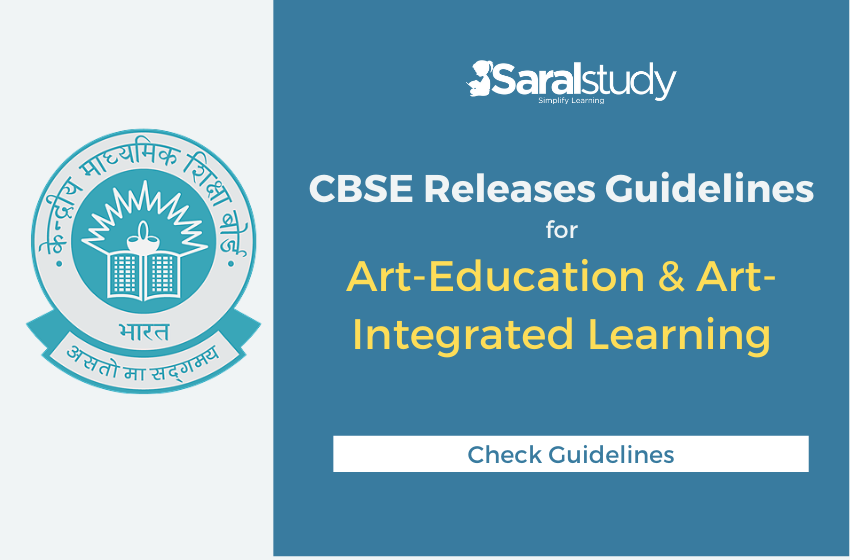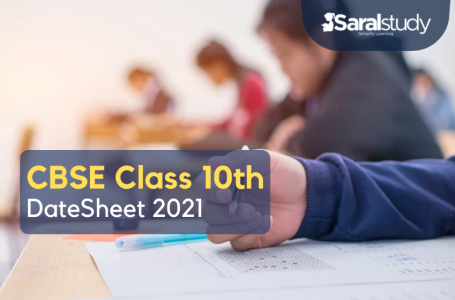CBSE Releases Guidelines for Art-Education & Art-Integrated Learning for Classes 1 to 10

According to the new CBSE circular, CBSE art-integrated activities are compulsory from 2020-21 in each subject for class 9 and 10 which would be considered for interior appraisal. CBSE students of classes 1 to 8 need to make one project each year not restricted to any one subject.
CBSE students of Classes 1 to 8 need to make in any event one art-integrated project in every academic year which can be considered for Internal Assessment in the subjects concerned the task doesn’t need to focus on just one subject.
But, CBSE students of classes 9 and 10 need to take up an art-integrated task for each subject which will be considered for internal assessment.
CBSE explained in the circular that art-integrated learning was being presented as an instructing apparatus and not to help art skills in general. It was an approach to utilize art to both educate and comprehend different subjects better.
Given below are all guidelines that CBSE schools and CBSE students need to follow for art-integrated projects.
Table of Contents
Guidelines for CBSE schools to present art integrated learning:
- Classes I–VIII, Art Integrated Project should be of trans-disciplinary nature. The project work can include more than one subject and this can be considered for Internal Assessment in the subjects concerned.
- Classes IX and X, the students will take up the art integrated project work as subject enrichment activity in all the subjects for internal assessment.
- One of the objectives of art integrated education is to make the students aware of the vast and diverse cultural heritage of our country. Therefore, Students will take up integration with any form of Indian Art – visual or performing, as it will be helpful to students to easily understand the project that is culturally connected to them. Teachers need to facilitate learning of the chosen Indian art form and ensure that the students are able to creatively integrate the art form(s) being used in the project.
- In minimum one project work of students from classes I –X, it is mandatory to integrate any art form of the paired State/UT, as defined under Ek Bharat Shreshtha Bharat Programme. For example, CBSE students of Delhi will need to integrate the art form of Sikkim. Click here to confirm the latest pairings
- Subject teachers along with Arts teachers must plan and discuss the projects in advance at the beginning of the academic session so that students can be given proper guidance to undertake various projects.
- The focus should be given on research of new topics that are not yet taken up in the classroom. Teachers must facilitate exploration of research on the topics to give students hands-on experience.
- The project should be taken up in an eco-friendly manner, using readily available local resources without any financial burden on parents or guardians.
- The teachers may follow the following process of embedding arts with other subjects for carrying out the project work:

- The Project should be done by students in groups with 4-5 students in each group.
- While creating projects, it may also be seen that it should not be too much pro art that it becomes difficult for the subject teacher to take it forward and guide the students. The projects should be simple and doable for the subject teachers and students without the assistance of art teachers/artists or others.
- Assessment techniques should be relevant and age appropriate. Criteria along with rubrics for assessment can be devised collectively by teachers and students while planning the projects. Students must be informed about the criteria decided for assessment along with maximum marks before commencement of work on the project.
- Schools and teachers may prepare their calendar by assigning dates and months for the execution of project work by the students and the records of assessment of these project works should be maintained at the schools.
- The Art integrated project work shall also be an integral part of assessing the student’s participation in art related activities and attainment of learning outcomes for the subject/s.
- The marks awarded for these projects, as part of subject-enrichment activities of class X, will be collected by the Board at the time of uploading marks of internal assessment.
Art-Integrated Learning (AIL) as a Pedagogical Tool from classes I to XII
AIL will continue as a pedagogical tool for classes I to XII, in addition to the Art Education under co-scholastic area as provided in the Secondary School Curriculum of the Board.
The objective of AIL is not to promote arts and skills of arts but to use art as a tool to teach other subjects. The focus here should be to accept arts as a medium of the learning process.
So the subject teachers may make use of simple art forms in the classrooms; and give opportunities to students to enjoy planned art activities and while they are experiencing beauty of arts, they also learn and articulate the core concept of different subjects and apply it in daily life.
Art activities which can be integrated with different subjects to aid learning are given in annexure. The activities given in the annexure are only suggestive. Correlation of AIL activities is to be seen broadly and should not restrict to one or the other kind of subjects. For example, what helps us in Agriculture as a subject can also connect to Mathematics and Science subjects. Therefore, the teachers and learners should not limit themselves in the rigid boundaries as suggested in the said annexure.
In AIL activities, teachers and students may go for integration of visual and performing arts too. Since skill of making art is not the criteria of evaluation, children can explore and might come out with very creative expressions that enable achievement of the learning outcomes.
Reporting of Implementation of Art-Education (AE) and Art-Integrated Learning (AIL)
The Board has prepared the Art Education (AE) and Art Integrated Learning (AIL) – AE & AIL portal for reporting of the implementation of Art-Education (AE) and Art-Integrated Learning (AIL). The schools are required to upload data of the Art-Education and ArtIntegrated Learning projects of students in the AE & AIL portal for enabling students of class X and XII to appear in Board exams.
Pairing of States and Union Territories for CBSE AE&AIL Project Work
The following engagement matrix has been adapted from EBSB programme:
- Jammu & Kashmir: Tamil Nadu
- West Bengal : Ladakh
- Punjab : Andhra Pradesh
- Himachal Pradesh : Kerala
- Uttarakhand : Karnataka
- Haryana : Telangana
- Rajasthan : Assam
- Gujarat : Chhattisgarh
- Maharashtra : Odisha
- Goa : Jharkhand
- Delhi : Sikkim
- Madhya Pradesh : Manipur & Nagaland
- Uttar Pradesh : Arunachal Pradesh & Meghalaya
- Bihar : Tripura & Mizoram
- Chandigarh : Dadra & Nagar Haveli
- Puducherry : Daman & Diu
- Lakshadweep : Andaman & Nicobar
Check out the full CBSE circular
The CBSE circular was addressed to the heads of all CBSE schools. Look at the full CBSE circular here alongside all the annexures to get the details of what kind of CBSE art-integrated projects are normal for students of classes 1 to 10.
The Art-Integration guidelines of CBSE enrolls different suggestive exercises, projects, tasks and lesson designs and are accessible here.






